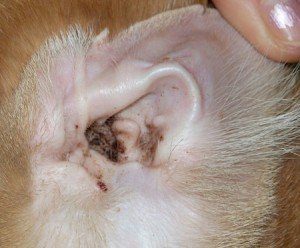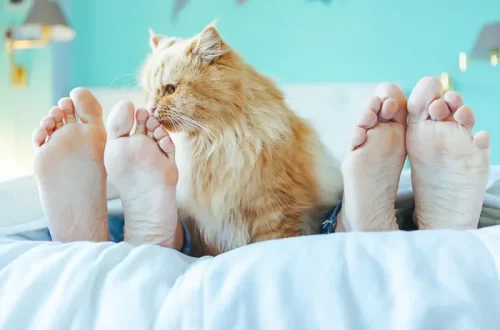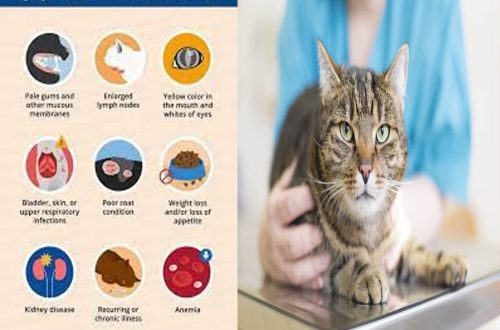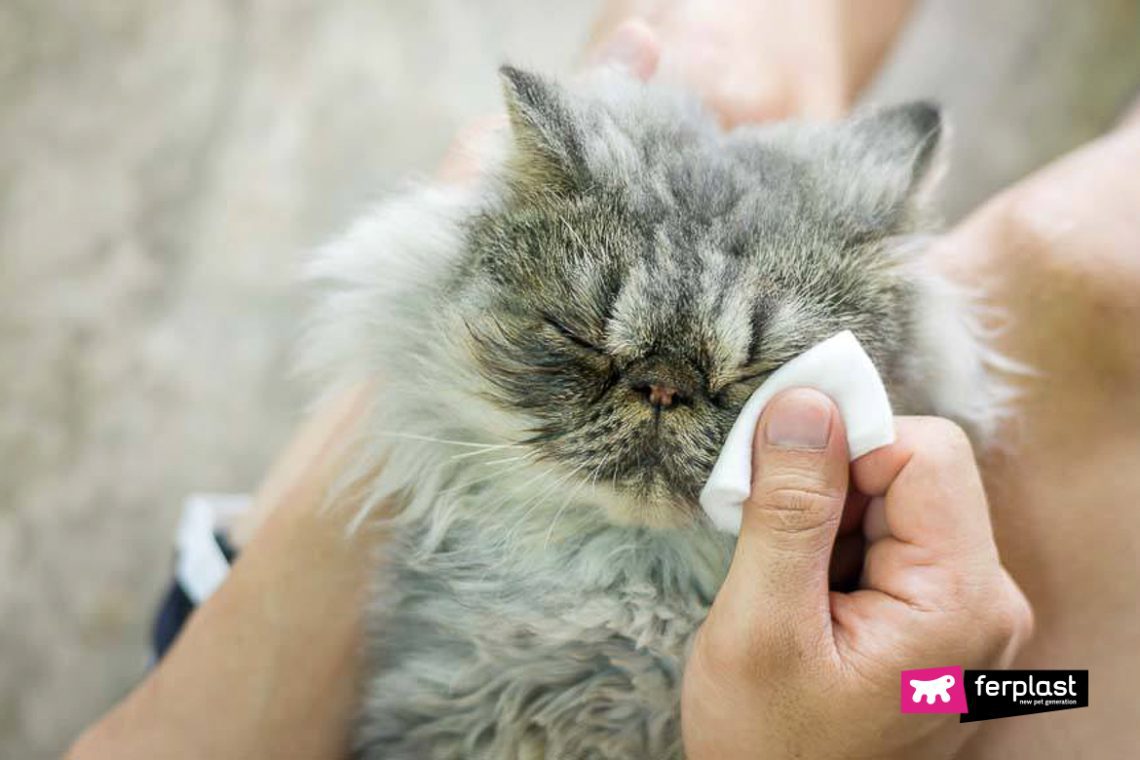
How and how to wash the eyes of a kitten or an adult cat
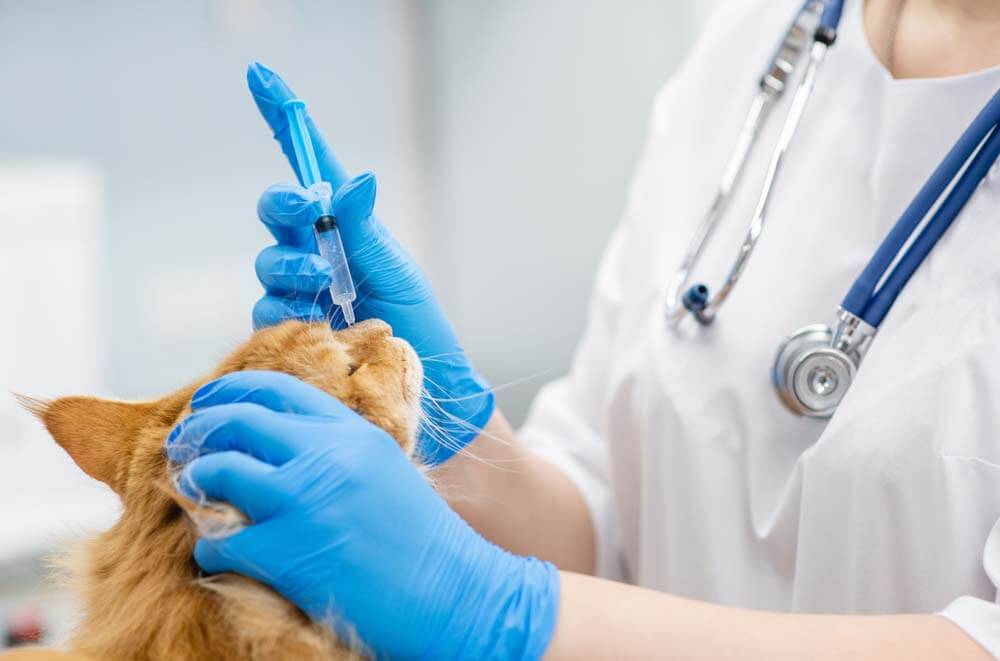
Normally, a healthy cat or cat follows the rules of hygiene on its own, caring for the hair of the entire body, muzzle and tail. Unfortunately, the animal is not always able to independently remove all impurities from the eyes, on the skin and hair around, in this case, the owner’s intervention is required.
It is important to always pay attention to the appearance and general condition of the pet and, if necessary, if you notice an untidy appearance, extensive pollution or soreness, immediately seek help from a doctor.
Contents
When is an eye wash needed?
This manipulation is necessary in a number of cases: prevention of secondary infection in trauma, routine treatment of a contaminated eye in an animal prone to contamination, removal of mechanical impurities and drug residues during treatment of an eye or systemic infection. Let’s consider this question in more detail.
Eye diseases
Conjunctivitis – inflammation of the mucous membrane of the eye, that is, the conjunctiva, caused by a viral or bacterial infection, an allergic reaction, trauma, etc. It is manifested by swelling of the conjunctiva, redness, active discharge and soreness.
Blepharitis is an eye disease that affects the eyelids of a cat. The eyes look edematous, expiration accumulates around them, drying up with crusts, itching and anxiety on the part of the animal are noted.
Glaucoma – This is a disease that develops as a result of an increase in intraocular pressure, manifested by damage to the optic nerve and retina. The chronic course of the disease can cause atrophy of the optic nerve, that is, lifelong blindness. The main manifestations are an increase in the volume of the eyeball, clouding, tearing, redness, etc.
Keratitis – Disease of the cornea. This pathology can be caused both by trauma and be secondary to another disease of the eye. It is manifested by edema, lacrimation, clouding of the cornea, with a complication of a secondary infection – itching and pain.
Cataract – a rare disease, characteristic mainly for aging animals, which consists in clouding of the lens of the eye. This change can be caused by chronic diseases of the animal – diabetes mellitus, trauma, intoxication, metabolic disorders, genetic predisposition, etc. Visually, this condition is noticeable only in the later stages.
Inversion of the century is a rare disease in cats. This is a congenital or acquired due to prolonged inflammatory processes, a problem that manifests itself in the wrong location of the eyelid and ciliary margin. Most often, it is wrapped inward, thereby constantly injuring the surface of the eye. Visually, this pathology manifests itself very characteristically, but the first thing that owners most often pay attention to is redness, increased discharge from the eyes, and anxiety.
More details about each disease can be found in the article.
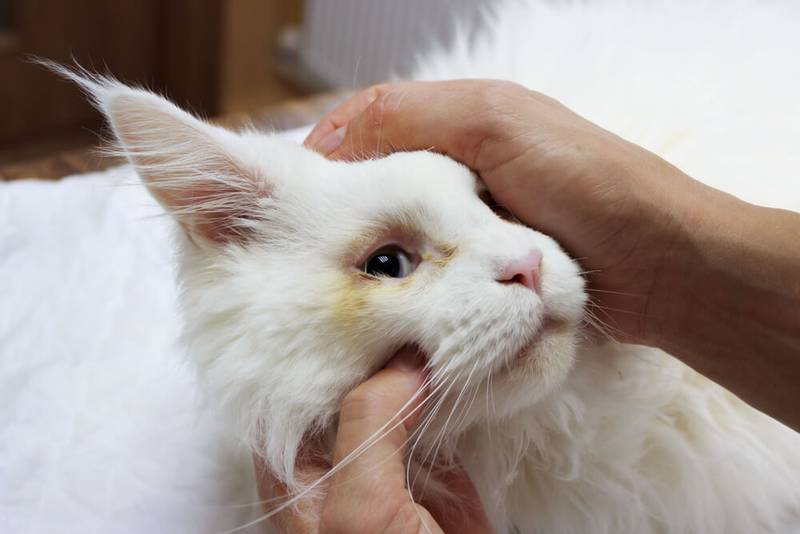
Injuries
Mechanical damage to the surface of the eye is most often found in cats that are on their own or live in contact with other animals. Injuries are caused as a result of injuries with sharp objects, in fights, falls and other unforeseen situations.
This pathology is manifested by general inflammatory signs – outflow from the eye, swelling, anxiety from the pet, pain. As a result, on the surface of the eye, you can see swelling of the corneal tissue – a whitish surface. At the appointment, a doctor who suspects an eye injury conducts a study with fluorescein staining. Thus, he details the vastness and depth of the lesion – forecasts and further therapy depend on this.
Each disease is unique in its own way and requires an individual approach and appointments. But one thing remains common in the treatment – for any inflammation, it is necessary to rinse the cat’s eyes and keep them clean. Previously, the owner, before any manipulations, the introduction of drugs – drops or ointments, it is necessary to qualitatively treat the eye from mechanical impurities and secondary bacterial infection. With advanced diseases, the cat has to wash the eyes even from pus.
Anatomical features
Some cats have anatomical features of the nasolacrimal duct. For example, narrow, short, folded eye orbits, like exophthalmos, skin folds, are found in short-faced cats – Persians, Exotics, Scottish Folds. Owners of these cats often experience excessive lacrimation and tear ducts. Under the eye of such cats, the secretion of the lacrimal gland often accumulates, in which, over time, harmful bacteria develop, causing local inflammation, alopecia, itching and anxiety on the part of the animal.
It is important for such breeds to pay attention in a timely manner, to treat and wash their eyes, to prevent bacterial inflammation, to clean the skin and coat around, without waiting for secondary changes.
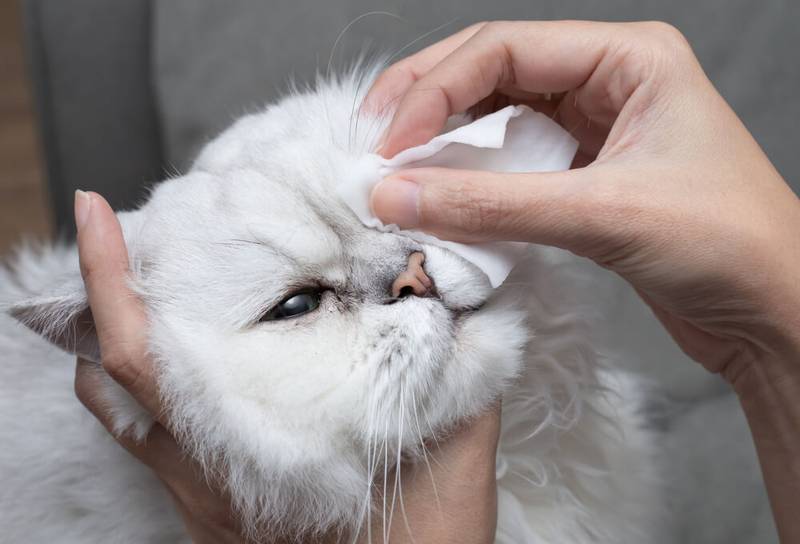
How to wash the eyes of kittens and an adult cat?
Folk remedies
To wash the eyes of a cat or kitten, you can use diluted decoctions of tea or herbs. It is important to use solutions at a comfortable temperature that does not injure or burn.
You can use the following options:
Strong tea or brew. To do this, you need to brew strong tea / decoction, defend it for 10-12 hours, or better – a day. It is important to use loose leaf tea or herbs, not tea bags.
Chamomile decoction. One sachet of chamomile at room temperature is enough. It must be remembered that it can dry out the skin with frequent use.
Hypericum decoction. This decoction must be used diluted.
Decoction of calendula. Water decoction brewed from calendula flowers. It is important to dilute it before using for eye treatment.
Drugstores
You can use standard, readily available drugs from a humanitarian pharmacy.
Sodium chloride solution 0,9%. Standard saline solution used for intravenous administration. When used, it can be drawn sterile using a syringe. So the remaining bottle will remain sterile and suitable for further use.
An aqueous solution of chlorhexidine 0,01%. It is important to pay attention to the concentration of the drug and the absence or presence of alcohol-containing substances in it.
Furacillin solution 0,02%. Also use low concentration.
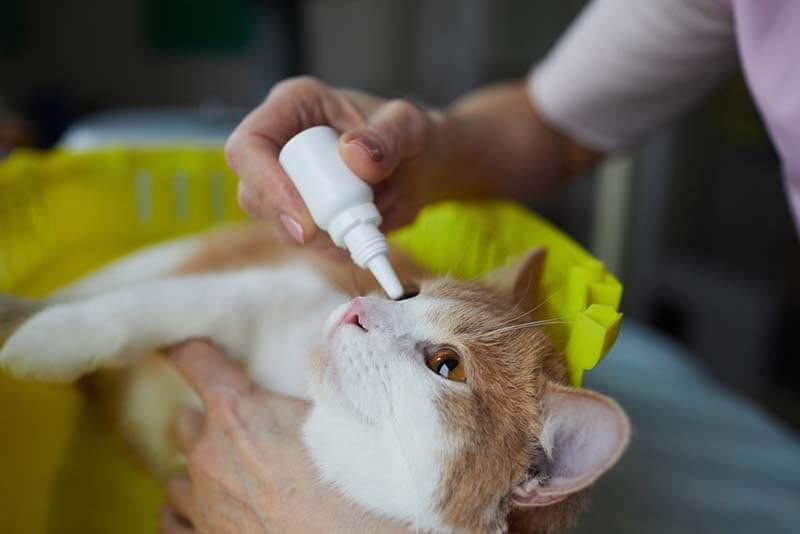
Specialized means
The eyes of a cat at home can be washed with any of the following means – both as a preventive measure and in combination with therapeutic drugs in the treatment of any disease:
“Diamond Eyes” – a drug with chlorhexidine, taurine and chlorocide C. These cat eye drops are an antiseptic that can be used as a prophylaxis and, as a concomitant, in the treatment of ophthalmic pathology.
Lotion for cleaning the eyes of any company. It is important to pay attention to the principle of using the drug, prescribed in the instructions – usually they can not be used against the “tear tract” and in no case be applied to the surface of the eye.
How to wash the eyes of an adult cat or cat?
As an aid to eye treatment, you may need:
a pipette or syringe without a needle for applying the drug to the surface of the eye;
cotton pad or gauze swab (or sterile rags) – to remove contaminants and excess drug;
a blanket – as a means of humane fixation, if the cat has a negative attitude to this procedure;
treats as positive reinforcement – encouragement.
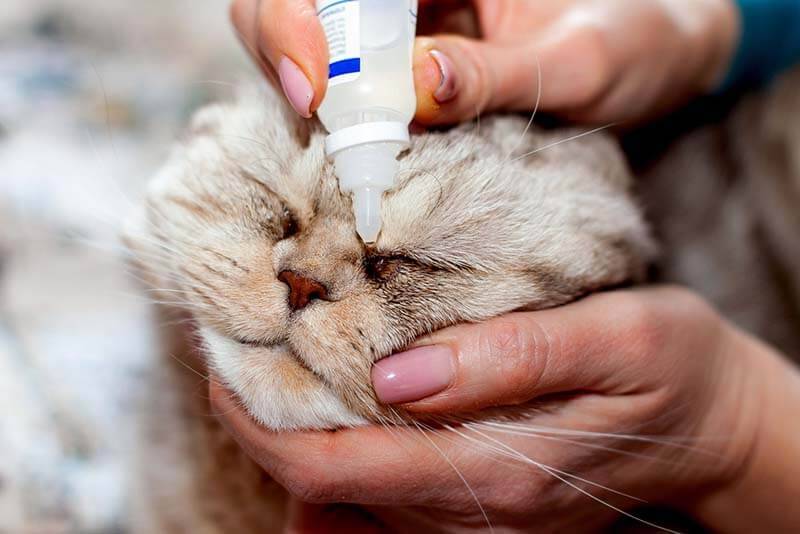
The main thing when washing the eye:
Calmness
It is important to approach this manipulation calmly and carefully. In no case should a cat be grabbed and forced to cooperate with a rough fixation – in this way you can scare it forever, and the cat will meet each procedure like a wild animal.
Humane Fixation
It is easy to pick up a calm and loving cat. But what to do with an aggressive or untouchable pet? This is where a blanket with a homely smell will come to the rescue. With caring movements, it is necessary to wrap the cat or cat in a blanket, thereby immobilizing it and giving a feeling of security.
Speech
It is important to continue talking to the cat throughout the procedure in a calm and quiet voice, even if the cat begins to resent. Your speech will make it clear to the caudate that everything is fine, and nothing threatens him.
It is necessary to drip 2-3 drops of the solution of our choice into each eye and let the animal blink several times. By doing this, you will remove excess solution through the outer corners of the eyes, as if he were crying.
With a rag or napkin dipped in the selected solution, you need to remove excess and dirt that has accumulated around the eyes. Cleanse the coat and skin with gentle massaging movements. Never injure your eyes. It is important to use a separate tissue for each eye.
If necessary, the prescribed drops can be dripped into the already cleansed eyes of the cat or cat again.
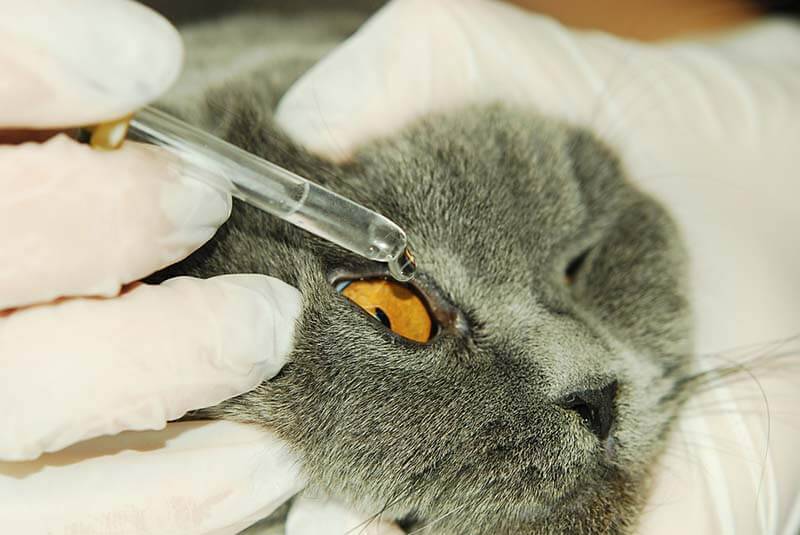
How to wash the eyes of kittens?
Eye treatment for kittens is very similar to that for adults. The basic principle lies in a humane approach and a gentle procedure with the aim of cleansing, but not additional injury. For comfortable fixation, a blanket is also used, warmth, soft fixation is possible by the skin fold of the withers as an imitation of a cat mother. Do not hold the kitten on weight by the skin fold, thereby causing pain. If an adult kitten is unnerved by this approach, stop immediately.
Apply 1 drop of the solution to each eye. If the kitten is very small, excess solution and dirt can be removed with a cotton swab.
Both an adult cat and a kitten, after any unpleasant procedure, must be encouraged – stroking, praise for good behavior and treats. In this way, we reinforce the good attitude of the animal to any necessary manipulation – next time, everything will be even easier. Doctors are wary of prescribing eye drops to kittens due to their high concentration.
Now that the question of how and how to rinse the eyes of a kitten or cat at home has been revealed to the maximum, we note what you need to pay special attention to so as not to harm the pet.
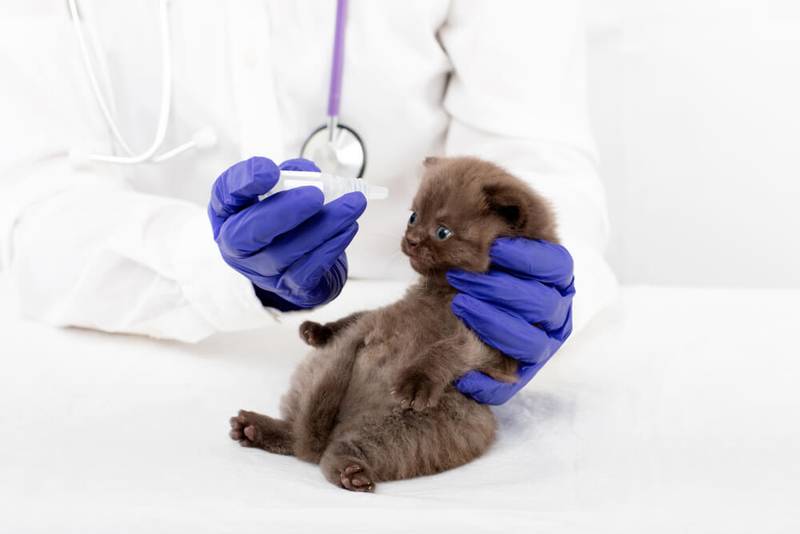
Precautions
In no case should you enter alcohol solutions and antiseptics, concentrates into the eyes. In this way, a chemical burn of the surface of the eye can be caused.
You can not use plain water as a treatment – it violates the composition of the microflora of the eye and can dry out its surface.
Do not use hot decoctions due to possible thermal burns.
Do not use cotton wool or fibrous rags – the pile can get on the surface of the eye, it can be difficult to remove it.
Do not use the same swab/cotton pad on both eyes. Thus, we can bring the infection from one eye to another.
In no case should you stop the treatment prescribed by the doctor without his knowledge and before the appointed time.
How to care for the eyes of an animal
It is necessary to monitor the eyes of a cat, starting from early childhood. The kitten opens its eyes, starting from two to three weeks of age. If they do not open for a long time, it is necessary to start treating them with soft movements of an ear stick or a napkin moistened with one of the above solutions. It is important to remove all crusts and expiration directly during the opening of the eyes, which usually lasts for 2-3 days.
Normally, adult cats do their own hygiene – licking the coat, washing the muzzle. It is important to pay attention to the condition of the cat’s coat – a healthy cat will always be clean, while a sick one, on the contrary, will have a dirty, untidy appearance. In this case, it is necessary to contact the veterinarian in a timely manner.
Prevention is important and needed as needed – that is, in case of contamination. If the eyes and the skin around them are clean, no treatments are required.
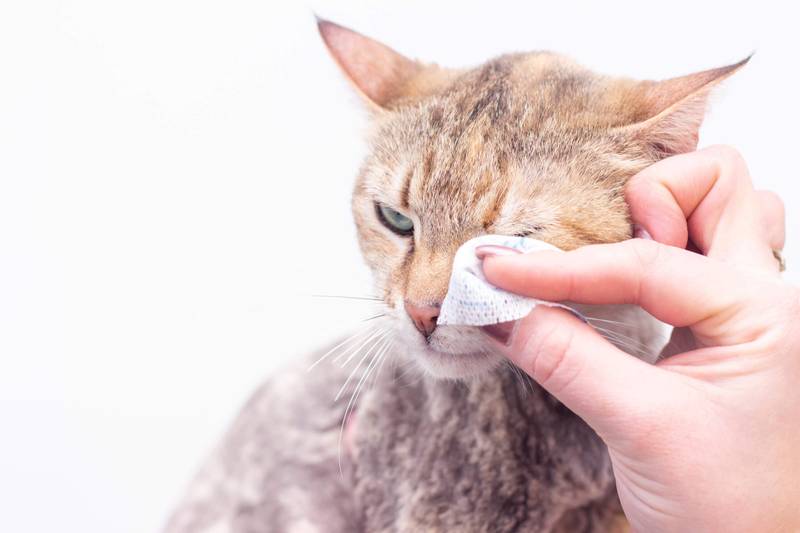
Eye Wash Essentials
Processing and washing are the main methods of first aid and prevention of secondary infection for any eye diseases of a cat or a cat.
It is important to take care of your cat’s eyes from an early age and throughout her life.
There are a large number of available means that can be used to wipe the eyes of both a kitten and an adult animal: decoctions of chamomile, calendula, an aqueous solution of chlorhexidine 0,01%, a solution of furacillin 0,02%, cleaning lotions.
For the treatment of the eyes of an animal, it is important to use strictly aqueous and low-concentration solutions.
A special approach to the cat during the eye wash procedure determines its further attitude to any other therapeutic measures. It depends on him whether her attitude will be positive or negative.
There are anatomical features of the cat’s eye that predispose to frequent contamination – it is important to pay attention to this and prevent secondary infections by periodically treating the eyes and skin around them.
A very small kitten can be wiped with a cotton swab; for older animals, you can use cotton pads / gauze swabs.
F.A.Q.



